
Lady First The World of First Lady Sarah Polk
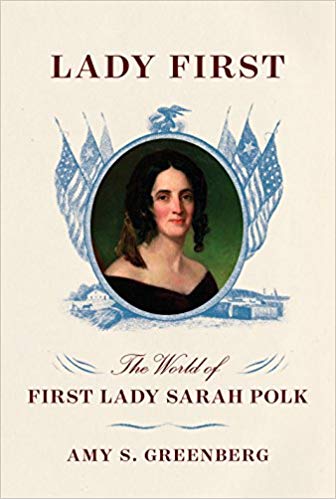
Lady First: The World of First Lady Sarah Polk
By Amy S. Greenberg
Some biographers fall in love with their subjects. Amy S. Greenberg is not a suspect. Sarah Polk was many things but endearing was not among them. She was manipulative, scheming, deceptive, cunning and devoid of inconvenient compassion. All the same, she was bright, sociable, and charming, She was no beauty but was slim, and in a regal way, attractive.
Greenberg contends that historians have shortchanged Sarah Polk. If mentioned at all, it is a line or two at the end of dissertations about her husband, President James K. Polk. The author describes him as brilliant, introverted, dour, taciturn, impatient and driven. Not the attributes associated with winning friends and influencing votes.
Sarah had all the qualities James lacked along with a worldly knowledge rare for women of her time. Her father, Joel Childress, believed that his daughters’ education should be equal to that of his sons and Sarah was an enthusiastic student. Childress regularly discussed business and finances with Sarah who demonstrated an early interest in both. The proscribed instruction for young ladies was not for her, although she did not lack the feminine graces.
Early Days
Childress was a man of the frontier who, despite a colorful past, was a respected farmer, slave-owner and the first postmaster of Murfreesboro County, Tennessee. It was a position that bespoke political connections. Andrew Jackson marched off to fight the British in1814 carrying with him a magnificent dress uniform purchased by his friend Joel Childress.
When Joel Childress fell sick and died at age forty-two, a month before Sarah’s sixteenth birthday, she left school to help her devastated thirty-eight-year-old mother. In addition, she entered the political life in which her father had been active. Murfreesboro was the state capital and legislators were regular visitors at the Childress home as was James K. Polk.
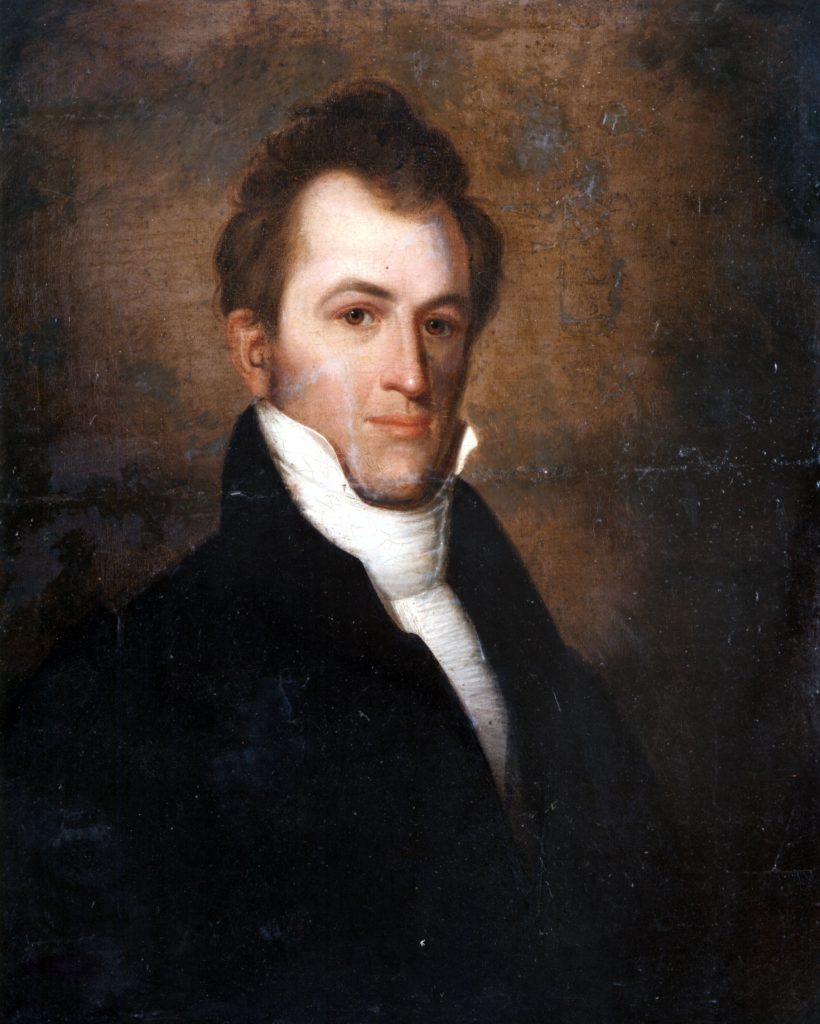
Samuel Polk, father of James, was a wealthy farmer who moved his family from North Carolina to Columbia, Tennessee. At the time of the move, James was a sickly eleven year-old who suffered from painful bladder stones. His father found a surgeon to remove the stones. The experimental surgery was successful, but the crude operation is thought to have left James unable to father children. During his youth, family friend Andrew Jackson often visited. Later he would become a political mentor.
Political biographies include a great deal of history because they chronicle the lives of individuals who both lived it and made it. Tennessee’s is folded into Greenberg’s narrative because James and Sarah grew up there and it is where their political life began.
That the two young people shared an interest in politics is not surprising, given the setting in which they met. Sarah was vivacious, with a ready wit and ease of conversation that must have struck the reserved young man as rather miraculous…
… James ran for the Maury County seat as a state legislator. He faced a veteran incumbent. The race was difficult and expensive. Voters expected candidates to treat them to free food and drink. Polk paid for 23 gallons of cider and hard liquor in his home county. After two days of voting, he emerged the winner.
James won Sarah’s hand, too. They were married at Sarah’s home on New Years Day 1824.
Little is known about their early understandings. Did she know that they would be childless because of his early surgery? Did he know that the life she desired was different from that of other women? No doubt some sort of accord between them existed.
Sarah recognized James’s political promise and pushed him forward. She shared his passion for small government and continued territorial expansion. She saw what he could do, and what they could do together. James quipped that ’had he remained the clerk of the legislature, Sarah would never have consented to marry him.’
In 1825, a year after their wedding, James ran for Congress and won. Congressmen did not bring their wives to Washington. There were few suitable or affordable family accommodations. Sarah stayed behind in their Columbia home. The six months they were apart was not a happy time for either. When James left for the beginning of the Second Session of the Nineteenth Congress, Sarah went with him. She knew what she wanted and James was happy to oblige.
It was a miserable journey that took several days. The terrain was difficult, sparsely settled and lacked a single decent road South of Ohio. Two of Tennessee’s esteemed Democratic politicians, Senator High L White and Congressman Sam Houston, traveled with them. Sarah did not complain about the jolting ride, the cold weather or the primitive accommodations. She participated in lively discussions about tariffs and a proposed central bank. The travelers disapproved of both. Like Thomas Jefferson, they rejected legislation to foster industry and business. They believed that the proper direction for the new nation was to expand agrarian agriculture and wealth. They condemned opposition to expanding slavery because it was necessary to grow staple crops. What America needed, they believed, was more land, which would require moving Indians off territory that “rightly belonged in the hands of white farmers.â€
As historian Daniel Walker Howe writes: 1.
White supremacy, resolute and explicit, constituted an essential component of what contemporaries called ‘the Democracy – that is the Democratic Party.
He cites W. J Cooper2 (reviewed here) who explained that the prevailing view among white southerners of the mid-nineteenth century was that there was no contradiction between faith in liberty and the existence of slavery. In fact, white Southerners defined liberty as encompassing their right to own slaves. Economic interests united Southern plantation society into a politically powerful and socially cohesive group. By 1815 they had held the presidency for twenty-two of the past twenty-six years and would control it for all but eight of the next thirty-four.’
This reviewer contends that the willful amnesia of present-day Democrats about their pro slavery past, and their attempt to tar opponents with it, is a textbook example of what psychologists call “projection.†That is, a defense mechanism in which the human ego defends itself by attributing their own conscious (or unconscious) impulses or qualities to others.3.
Washington
James found lodgings at the Williams Hotel on Pennsylvania Avenue. Congressional terms were too brief and salaries too small to rent a house. They would look for something better if James was reelected. Washington D.C was a work in progress. Empty lots abounded, as did pigs roaming unfinished streets. None of that concerned Sarah. She reveled in the sophisticated life of the capitol, frequently visited the “Ladies Galleries†in Congress and paid close attention to political debates.
Greenberg points out that women were an active presence at all public gatherings and celebrations in Washington, unlike women elsewhere in the nation. They read newspapers, knew about controversial issues and socialized with members of Congress. Sarah’s political connections, education, and refined background “amply prepared her to meet the exacting standards of Washington D.C. high society.â€
President Andrew Jackson
When Jackson defeated John Quincy Adams in 1828, he became the first president from West of the Appalachians, bringing new attention to Tennessee. The death of Jackson’s beloved wife, Rachael, caused him to ask his niece to serve as First Lady, but she was unsuited for the task.
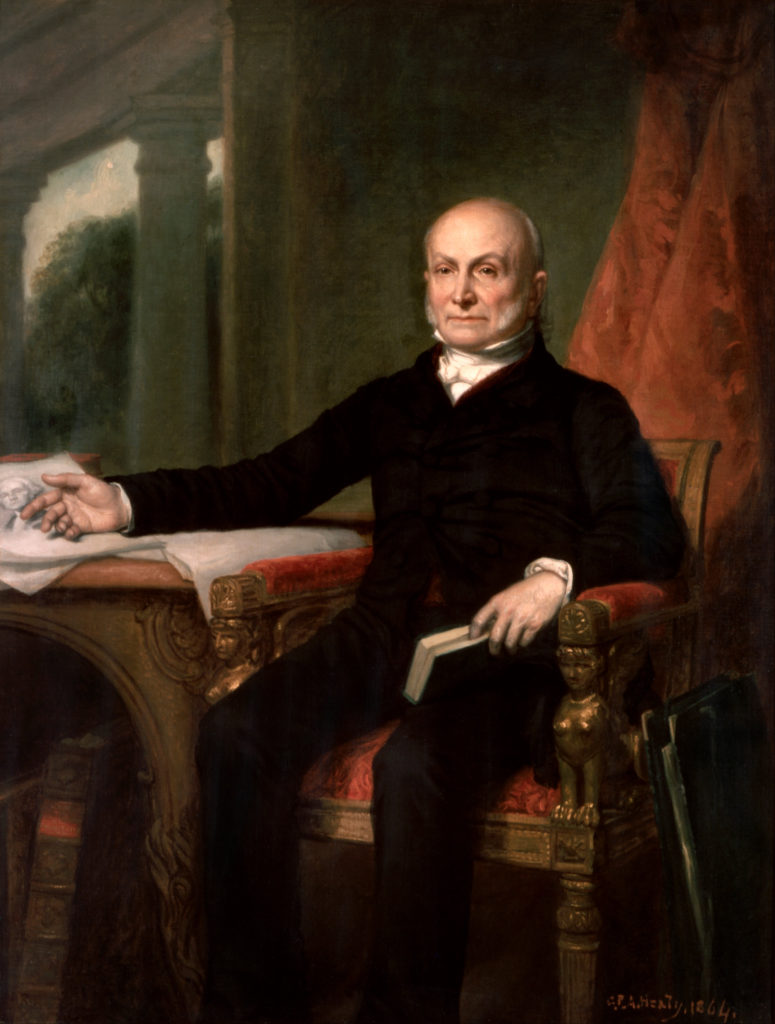
Sarah, however, was superbly equipped to fill in. She had known Andrew Jackson her entire life and enjoyed his affection and respect. James, of course, supported Jackson’s agenda of territorial expansion and small government. With Jackson’s blessing, Sarah made important political friends and became the doyen of Washington power politics.
James was re-elected twice and in 1835, with Jackson’s support, he defeated rival Tennessee politician John Bell as Speaker of the House. James and Sarah understood the responsibilities of that position included promoting Jackson’s policies in Congress. They moved to a larger boarding house with better facilities for entertaining. Members of the Supreme Court occupied most of the other rooms. Their accessibility was an opportunity for Sarah to build a bridge between James and the Court, and Sarah never wasted an opportunity. At the same time, she became “famous friends†with their wives.
In public she created a façade of demur, deferential congressional wife as society and James required. According to the mores of the time, men and women belonged in different spheres. The competitive, public world of work and politics was for men. Women were assigned the domestic realm of children, religion and home. This division, however unfair, grew from necessity. Families were large, Infant mortality was high, and medical science primitive. In addition to childcare, women were responsible for maintaining and managing a home.
Sarah did not have children to rear, a house to keep, or meals to prepare. She had only to devise guest lists and supervise the provision of food and drink. She was easier to talk to than James and party leaders found her a willing conduit to Jackson. Wives viewed her as a model of propriety and elegance and were flattered by her attention.
In 1838, Sarah and James reluctantly left their happy Washington life to advance James’s political career. He could enhance his national standing if governor of Tennessee. In that position he could run for vice president. From that platform the presidency could be attainable.
The 1839 campaign for governor was physically and financially draining. It required non-stop travel and speech making for James, and non-stop work for Sarah. She stayed home as propriety demanded, but it was not a vacation.
She was his communications director, advisor, and general factotum while plying her many contacts to support James. As the campaign wore on, the candidate’s demands on Sarah increased even more.
Governor James K. Polk
By the time James was narrowly elected, both were exhausted. It was not an auspicious time to be a Democrat Governor in Tennessee. James was closely associated with Jackson and Jackson with the panic of 1837. The revitalized Whig Party blamed bankruptcies, farm foreclosures, and tight credit on Jackson’s policies and, by association, James Polk. Tennessee political power resided in the legislature, not in the governor’s office. The salary was small and neither housing nor funds for entertaining were provided. Mindful of limited resources, James refused to allow Sarah to host the kind of gatherings that had been so beneficial to his career in the past. It was a decision he had reason to regret. James ran for re-election in 1841 and, despite Sarah’s misgivings, again in 1843. He lost both times.
Political Wilderness
So began their years in the political wilderness. James political career appeared to be over. His Mississippi plantation was operating at a loss and family obligations became an increasing financial burden. Three of James’s brothers had died in a single year a decade earlier. As the eldest, James had to manage all three estates.
Although it was common in the South, in such cases, for close family to adopt nieces and nephews, there is no record of James offering to do so, although he did assist financially. It appears that neither James nor Sarah wanted to exchange their political partnership and their enjoyable life style for assuming responsibility for even one of his brothers’ children.
They missed their life and friends in Washington. James was sidelined when Vice President Martin Van Buren was elected president at the end of Jackson’s term. Van Buren lost in1840 to William Henry Harrison, the first Whig to attain that office. Perhaps ironically, from Sarah’s point of view, that campaign was the first in which women, Whig women, took an active part. The author takes the opportunity to expand on the activities of female Whigs and the less public exertions of Democrat women.
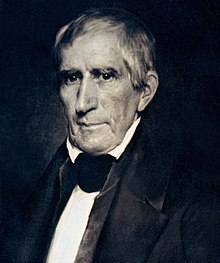
Harrison was the first President to die in office, and after only one month. Vice President John Tyler, a former (and apparently unrepentant) Democrat assumed the office. Tyler fought with the Whig Congress and Cabinet and replaced the latter with Democrats. Congress tried to impeach him without success and he was expelled from the Whig Party while still President.
The Whigs had no intention of putting Tyler on the ticket in1844. They turned to Henry Clay. Senator Clay had promoted internal improvements and proposed compromises to regional problems. In addition, he was a known quantity, having run for president twice before, albeit with no success.
When Andrew Jackson left office in 1837, he promised Sarah ‘the scepter shall come back to Tennessee before very long and your own fair self shall be queen.’ It was the Texas declaration of independence from Mexico that made it possible.
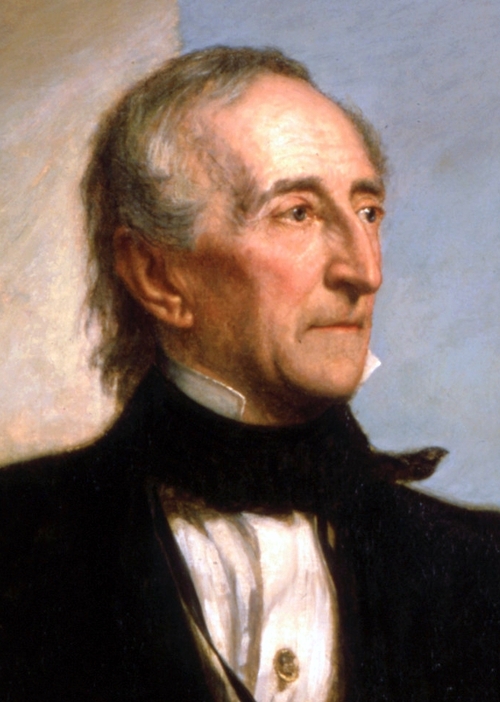
President John Tyler had negotiated a secret treaty to annex Texas from Mexico. Van Buren, the presumptive Democrat candidate in1844, was required to take a stand. He opposed annexation, fearing it would lead to a sectional crisis over the status of slavery in the West. Clay’s opposition to annexation was an important Whig issue.
Andrew Jackson informed James…
The candidate for the first office should be in annexation man from the southwest. James Polk, a lifelong proponent of expansion, was clearly the most available man.
Van Buren was the leading contender when the Democrats convened at their National Convention in Baltimore. His principal opponent was Lewis Cass of Michigan. The convention split over Texas annexation. A group supportive of annexation seized the floor and called for the reinstatement of the two-thirds rule to elect a nominee. (The Democrat Convention of 1840 had changed the rule to a majority.) With he two-thirds rule in place, Van Buren and Cass deadlocked. James emerged from the proverbial smoke-filled room as the man to break the deadlock, the Democrat nominee and the president.
President and First Lady Polk
Sarah’s persona of religiosity, deference and feminine modesty never faltered when she became First Lady. She had perfected the public perception of being above the political fray when James was Speaker of the House. Nothing could have been further from the truth.
She refused the Suffragettes’ request to support their cause publicly because it would be improper for the president’s wife to do so. However, she conveyed the impression of being sympathetic. The ladies invited James into their homes and introduced him to their husbands. Further more, she was not about to jeopardize the patriarchal image that worked so well for her. It provided cover for the exercise of political power that was not nearly as deferential as it appeared. She did not need a law.
Throughout the four years of the Polk presidency she found ways to persuade members of Congress and the military to advance his policies. She obtained positions for relatives and friends and relatives, or recommended army promotions. When the public tired of the four year War with Mexico, Sarah set an example of patriotic support for the warriors.
The author writes…
If it is true that James K Polk’s presidency was only possible with the help of Sarah, so too was it is true that Sarah could only do what she did because of the unacknowledged labor of enslaved servants. Because her slaves took care of her household, did her laundry, cooked her meals, cleaned her home, and tended the garden, she was able to focus on politics.
Although there is great deal of evidence that Sarah initially considered herself the very best kind of slave mistress, her solicitude for her slaves did not extend to freeing them, paying them, or to taking measures that might improve their lives if they would disrupt hers.
All of which is borne out by the biography. Nevertheless Sarah Polk was a daughter of the South. For good or ill, it was her identity as First Lady. It seems unrealistic to think she could, or would have behaved otherwise, however lamentable her behavior.
Conclusion
Polk died at the age of 53, soon after the conclusion of his second term as President. His story ends there. The book does not.
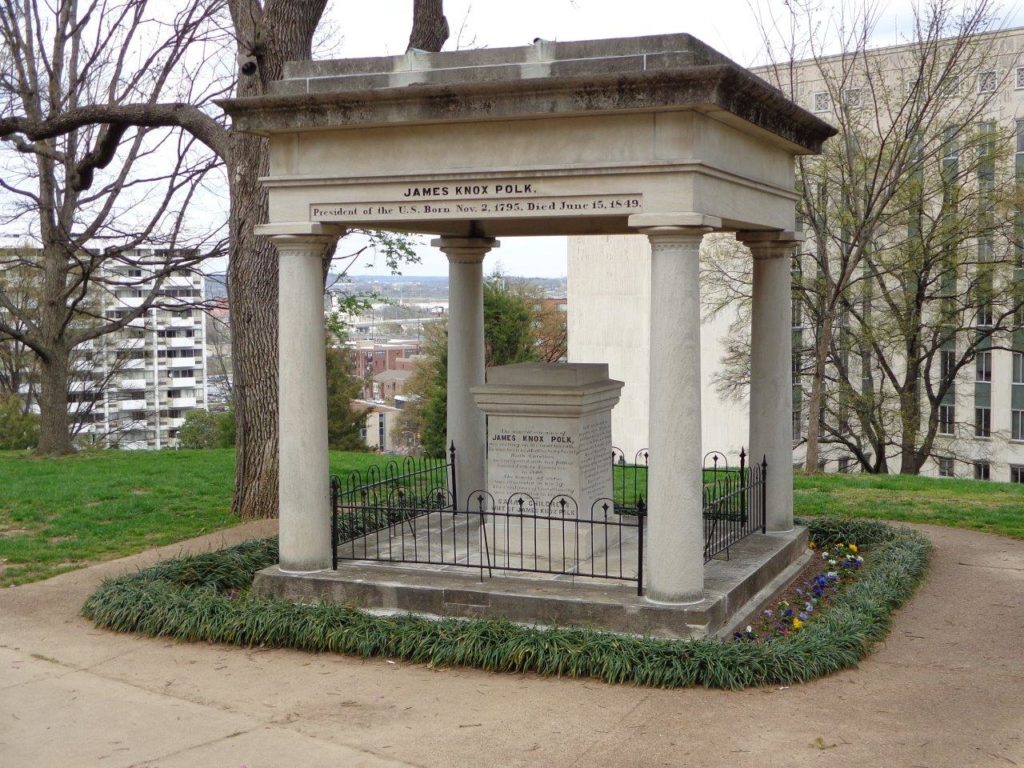
…Sarah’s bereavement defies an easy description. Partners in work and love, she and James had shared a harmonious life together for 25 years, more than half her life. Because they spent so much time together, because James had no close male friends, and because they had lived so long at a distance from relatives, and because they were childless, they were more dependent upon each other for emotional solace than most couples at their stage of life.
Having transformed the retirement home she and James had built in Nashville into his shrine and placing his tomb within sight of the house, she lived four more decades, The rest of Lady First is devoted to those years. It is as interesting, or more so, than the political history that preceded it. For it is all about Sarah.
She had an active social life but her entertaining always had a purpose, just as they had when advancing James’s interests.
During the Civil War, she flew a Union flag, (out of respect for James service as president she explained), proclaimed herself neutral, and opened her home to Union officers far from home in an otherwise hostile environment.
She had a tacit (but unspoken) understanding with Union officers. She would see to it that there would be no uprising among the civilian population. In return she would obtain paroles for Confederate soldiers languishing in Union prisons (sons of friends and relatives), and get scarce resources through Union lines and delivered to her door. Meanwhile, she hid Confederate treasures in her home, preventing Union confiscation.
In addition, along with many Southern women, Sarah devoted a large portion of her time to caring for wounded soldiers, both Union and Confederate. All the while expending her political capital to help the Confederacy.
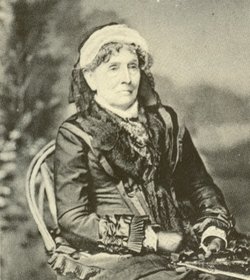
The final chapters of the book include interactions with Sarah’s family and the nieces who lived with and cared for her as she aged. Among them are the (then) teen-aged girls she had brought to Washington to assume the social obligations (visiting and being visited by congressional wives) that Sarah thought a waste of time. The girls had been thrilled to be part of the Washington scene, loved the gowns she bought them and worshipped Sarah. Their regard for her never lapsed.
Greenberg makes the case that it is unlikely that James K. Polk, America’s eleventh and, at the time, youngest president, would have accomplished what he did without her. It is not a stretch to say that the nation’s future would have been different as well without Sarah to promote the agenda “that would transform the nation, and the continent.â€
That the agenda is viewed critically today should not preclude recognition of what it accomplished. Robert Merry writes in his book,4 (reviewed here) That Polk’s expansionist policies extended the domain of the United States more than any other president. Other historians concede that Jackson’s repugnant Indian Removal policies opened 25 million acres of land to white settlement and prompted an enormous influx of immigrants seeking opportunity and better lives.
Efforts to mobilize the past to gain political advantage in the present not only pollute the political process; they corrupt public understanding of events and the context in which they occurred.
Amy Greenberg has written a well-balanced and absorbing account of Sarah Polk’s life and times. Although (in this writer’s opinion) with a sometimes annoying emphasis on women’s rights, a topic in which Amy S. Greenberg, Professor of History and Women’s Studies, is invested. However, that is a small quibble given that the author has moved a powerful and fascinating woman out of the shadows, in which she purposely hid, and revealed a part of the American story few knew existed.
Notes
1. What Hath God Wrought,
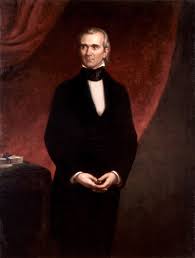
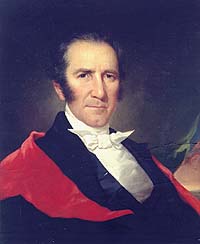
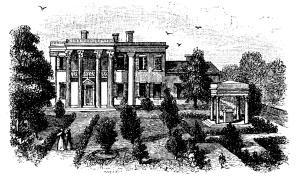
 The posts are coming!
The posts are coming!


0 comments
Kick things off by filling out the form below.
Leave a Comment